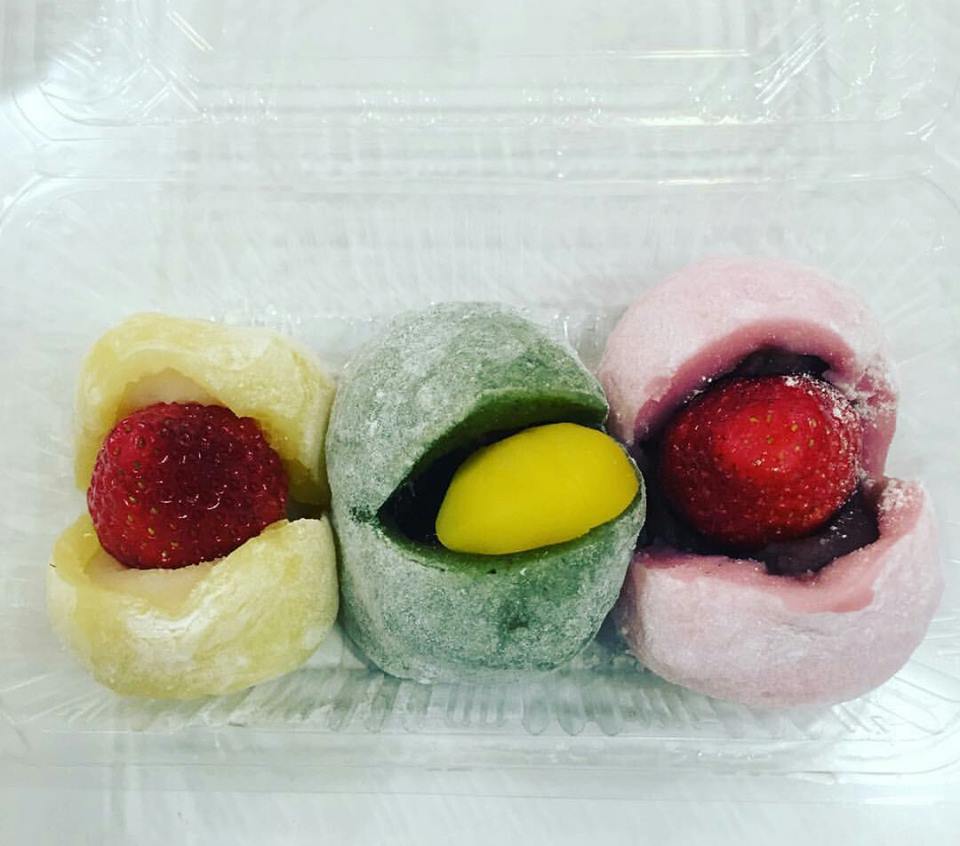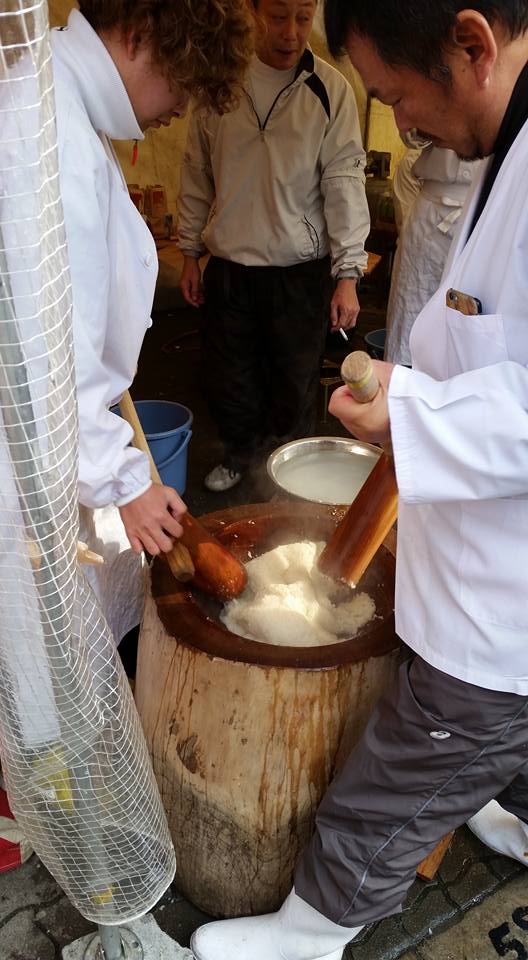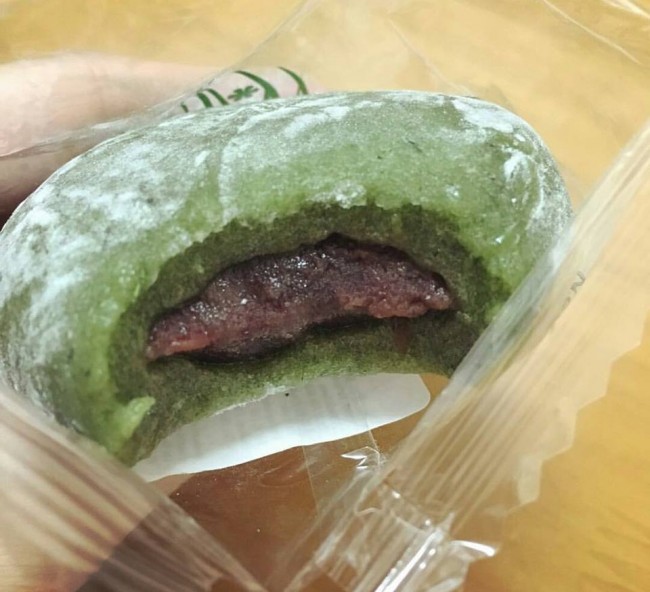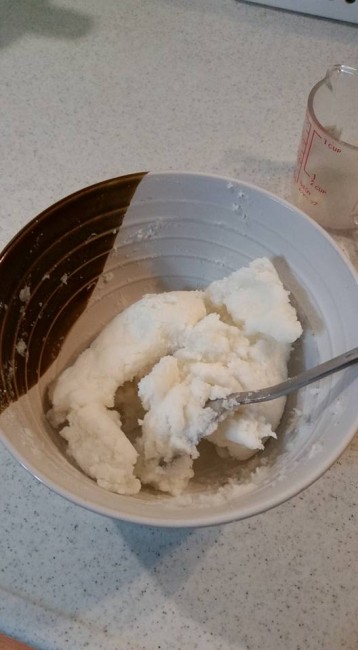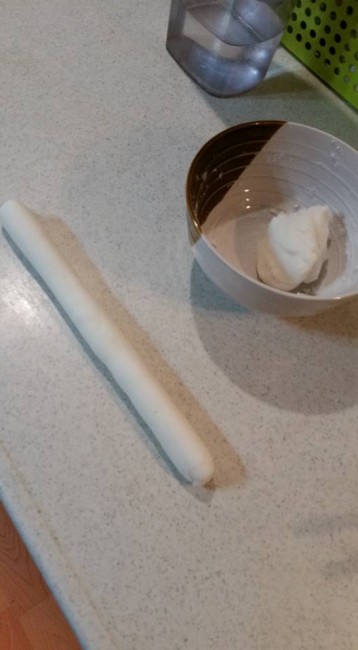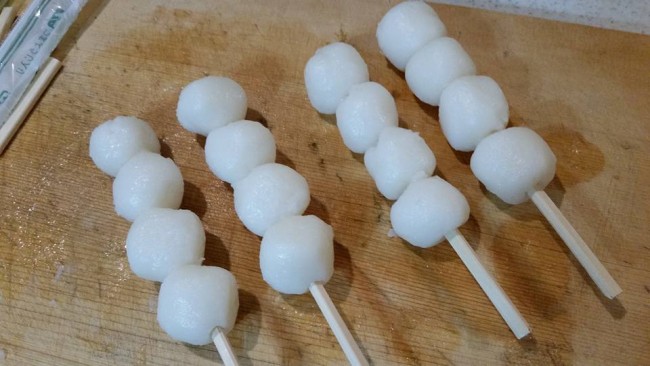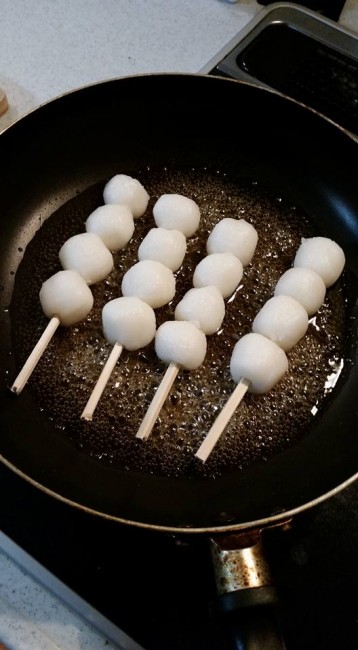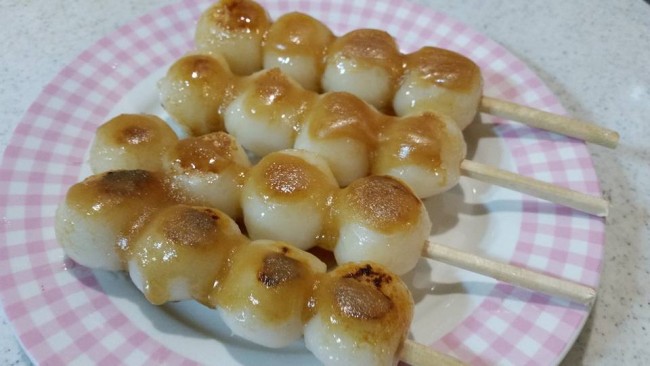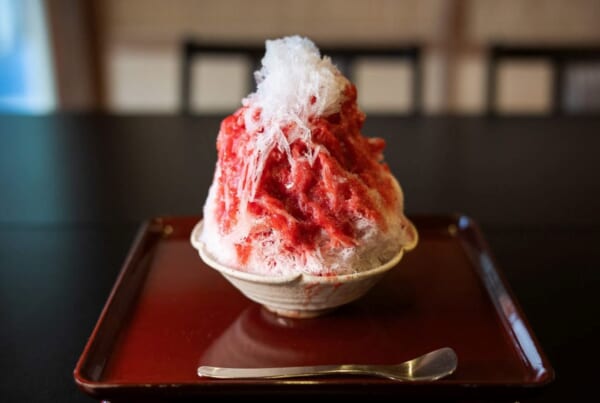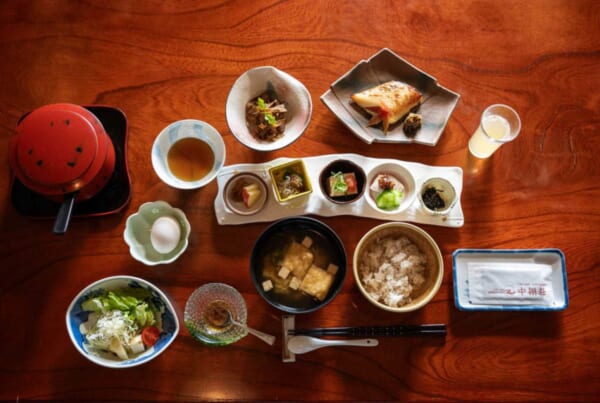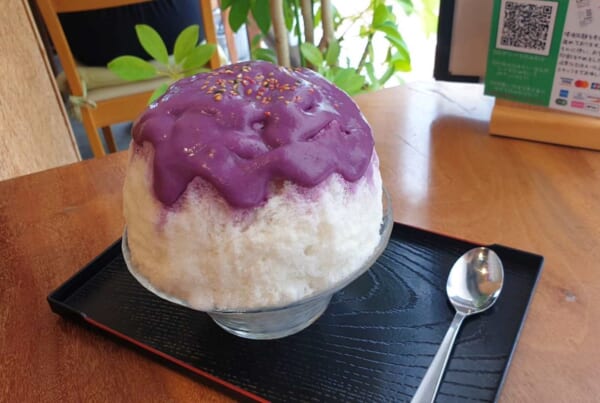The Many Forms of Mochi
Mochi is truly a unique addition to the already vast plate that is Japanese cuisine and is sold in a plethora of varieties, mostly in the form of many different sweets. It is made from the soaking, cooking then pounding of whole grain white rice. The rice is pounded until it becomes a glutinous gooey substance than can be moulded into shape. The traditional pounding of the rice ceremony is called Mochitsuki, and I recommend seeing this if you have the chance. At some festivals in Japan, you will have a chance to witness as two grown men pound away at a giant wooden bowl of rice until it becomes hot, delicious mochi.
Hard Mochi or Soft?
Mochi can be split up into hard mochi, and soft mochi. Hard mochi can be bought in little brick shapes, or little half-spheres. These mochi are traditionally toasted in a little toaster oven for about 15min before eating. You can set your oven to grill and watch as the mochi expands and gets a tasty looking toasted golden top. This is then eaten in a sweet red bean soup (oshiruko), or dipped in a mixture of soy sauce and sugar. Toasting and eating the gooey mochi is quite a fun little activity, so take this chance to prepare it with your children or maybe just someone who is just as young at heart. But watch your fingers, because the mochi gets hot!
A quick look around the sweets in any supermarket or convenience shop, will show you just how popular soft mochi is. Daifukumochi, is arguably the most popular confectionary mochi product. It is soft stretchy mochi stuffed with red bean paste (anko). These can easily be bought in many different colours for around 100yen a ball. A popular variation of the mochi is ichigo (strawberry) daifukumochi, which is very similar apart from a whole sweet fresh strawberry in the centre of the anko. These mochi tend to be more seasonal, and can be bought from most supermarkets or convenience shops.
Japanese Dango: Make it Yourself
Maybe you have seen dango being eaten in one of your favourite Japanese TV shows or anime. This popular little variation is often made as sweet little balls of mochi on a skewer, then covered in delicious sauce or anko. This is an extremely simple little treat to make at home if you’re looking for a sweet little Japanese snack (or dessert!) to really impress.
Japanese dango with sweet brown sugar sauce
Prep time: 5mins.
Cooking time: 10mins.
Ingredients
- 1 cup of glutinous rice powder (mochiko).
- Hot water.
- ½ cup of brown sugar.
- About 2-4Tbsp white sugar to taste.
Directions
- Prepare a large pot of water to boil, water should be about 1.5-2inches deep.
- Put 1 cup of glutinous rice powder in a bowl.
- In a measuring cup, mix 2-3 tablespoon of white sugar with 3/4cup boiled water until dissolved.
- Mix the sweet hot water and rice powder together until a warm doughy ball is formed. Too much water and the dough will be too sticky to handle.
- At this point, you can choose to add any food colouring if you want a different looking dango.
- Roll the dough out until it is a cylinder of approx. 2cm wide. Cut the cylinder into even square-ish pieces.
- Roll the individual pieces into nice little spheres and place them in the boiling water.
- Once the balls begin to float, they are ready to be removed and cooled.
- In a frying pan, mix ½ cup of brown sugar with 1/2cup of water and simmer gently until dissolved.
- Skewer the dango balls and place them gently in the pan of simmering sugar sauce and let them cook for about 5 mins. Careful not to let them burn!
- Remove dango and arrange on a plate. Use a spoon to drizzle any remaining sauce over the top.
- Enjoy this Japanese treat hot or cold!


